Search Results
Fine Jewelry University Articles matching: “blue star sapphire”
Showing only FJU Article results. Click here to show all results.
Fine Jewelry University (Show All FJU Articles)
-
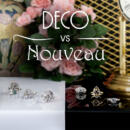
Art Deco vs. Art Nouveau Style Jewelry
…. Precious metals like platinum and white gold alongside rare and valuable gemstones such as diamonds, emeralds, and sapphires, were the materials of choice for Art Deco jewelry makers. The most prevalent diamond cut found in Art Deco jewelry… which led to very different expressions in jewelry. Once you learn about the fundamental styles of each, you will start to see their influence everywhere. They are also important guide posts that can aid in dating vintage and antique …
-
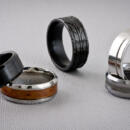
Alternative Metals for Men’s Jewelry
… 6,191 degrees Fahrenheit. Tungsten is rated at about a 9 on the Mohs scale of hardness which is the same as Ruby or Sapphire and just below diamond (which is 10). Like these gems, tungsten is very scratch resistant and will not bend out of …come in around 7-8 on the Mohs hardness scale which is about the same as quartz or topaz but softer than tungsten or sapphire. Like most alternative metals, cobalt chrome bands are hypoallergenic and biocompatible. But, in our experience, …
-
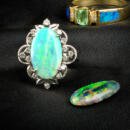
Gem in the Spotlight: Opal
…used in jewelry. For reference, here are the Mohs hardness values for some other gemstones you may know: Diamond 10, Sapphire 9, Amethyst 7, and Peridot 6. Turquoise is about as hard as opal, but you would need to consider Pearl or Amber (…, you will get different colors. Opals can display just about every color of the rainbow, but hues of green and blue are the most common. Typically the higher end opals have a darker body color, and a wide range of colors. Red carries …
-
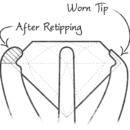
Jewelry Repair FAQ
… way it did before a gemstone fell out; who wouldn’t? That’s why we have literally 100s of carats of loose diamonds, sapphires, rubies, opals, pearls, and more in all shapes and sizes to choose from when selecting a replacement stone for …by the jeweler’s torch. However, with our laser welder we are able to retip prongs next to many gemstones (diamonds, sapphires, and rubies for example) without removing them, saving you time and money. Can my costume and fashion jewelry be …
-
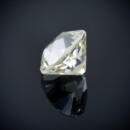
The History of Diamond Cuts
…culet (the point at the bottom of the diamond). Diamonds have gone from one facet (the table) to 18 facets. This cut started to unlock the brilliance within the diamond, and variations of it are still used today. Another early diamond cut… are four triangle facets that point towards the corners of the crown. This gives the appearance of a four-pointed star. The pavilion is cut into four main facets. Moving Towards Brilliance The evolution of the diamond cuts then takes a …
-
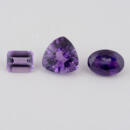
Gem in the Spotlight: Amethyst
… found in smaller deposits in other countries such as Russia, the United States, and Canada. Amethyst is known for its durability with a Mohs hardness rating of 7. For reference, amethyst is roughly as hard as tourmaline, softer than sapphire and topaz, and harder than opal and tanzanite. This makes it a durable gemstone that is resistant to scratching and chipping. It is also resistant to heat and chemicals which means that it can withstand daily wear and tear. Amethyst …
-
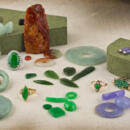
Gem in the Spotlight: Jade
…polish. Nephrite is commonly found in a darker olive green color but can also be very light green, orangey-red, black, and yellowish green. Jadeite can come in many different colors including pink, purple (often called lavender jade), blue, black, white, and the most valuable/desirable color: a vibrant green. The finest of all green jadeite colors is a saturated emerald green that is almost transparent, and it is called “Imperial Jade.” Jade is one of the top selling …
-
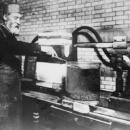
How Are Lab Grown Diamonds Made?
… lab grown diamonds. For decades, manufacturers of synthetic gemstones tried growing diamonds like they grew rubies, sapphires, and emeralds. It failed. Then they had the idea to grow diamonds in the lab like they grew in nature. High … is to create an environment of extremely high pressure and temperature where diamond growth can occur. Each process starts with a small diamond seed which is placed in carbon and put under very high pressure and temperature to grow the …
-
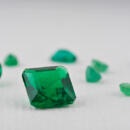
Gem in the Spotlight: Emerald
… and aquamarine) and are valued for their rich green color. The intensity of an emerald’s hue depends on the presence of chromium and vanadium in the crystal structure. Emerald’s Mohs hardness rating is 7.5-8 making it softer than sapphire and harder than amethyst and other quartz varieties. The refractive index of emerald ranges from 1.57 to 1.58, making it a moderately refractive gemstone. Its specific gravity ranges from 2.65 to 2.75. One of the distinctive features of …